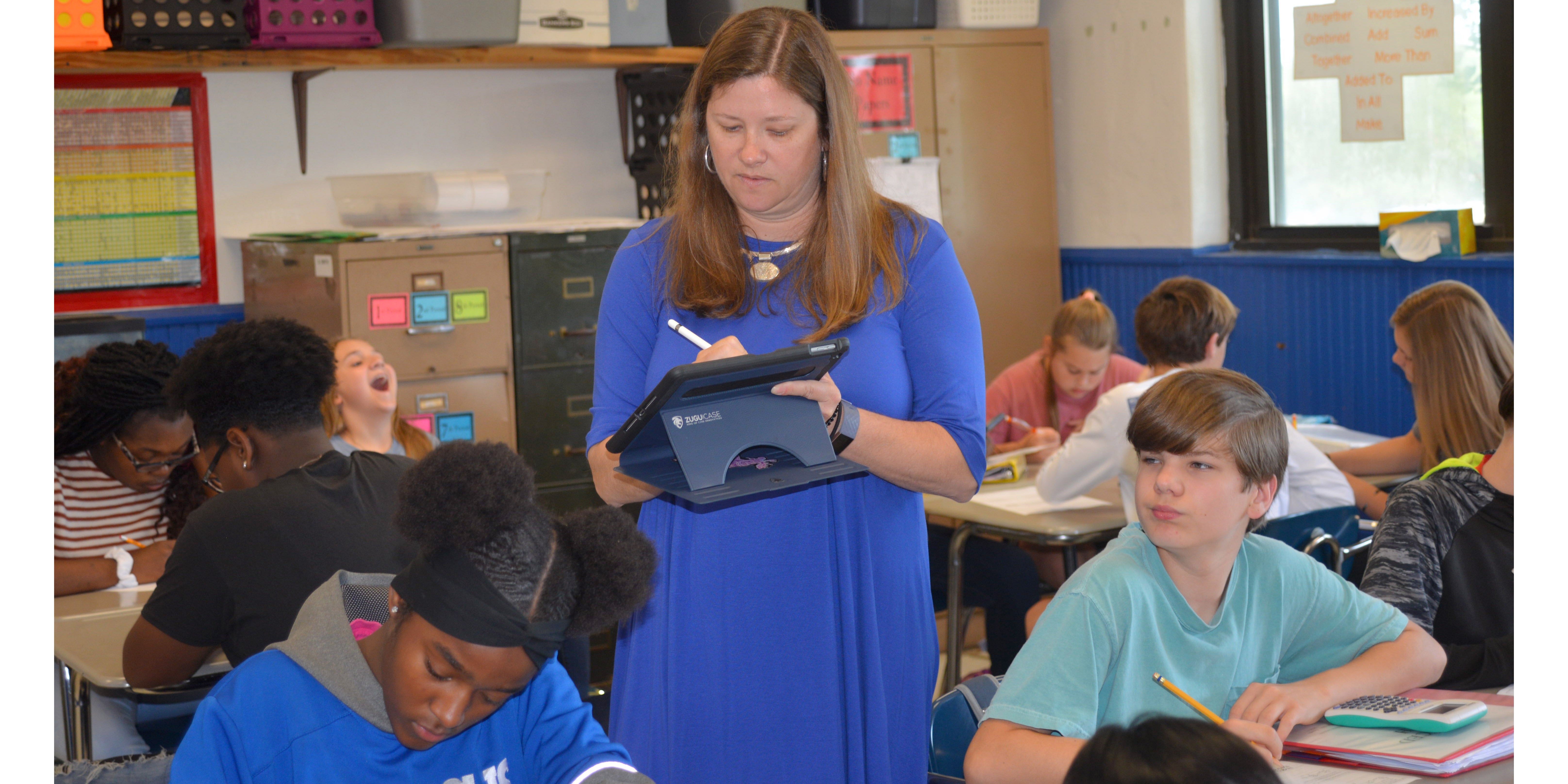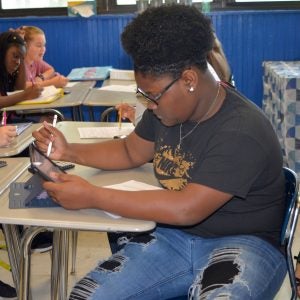DCSF grant brings high-tech lessons to DMS classroom
Published 1:16 pm Friday, June 21, 2019

- Amanda Smith is able to walk around the room and offer individualized help to students as she continues the lesson on the board for the entire classroom with the use of her iPad and Apple TV adapter. She is pictured with De’Shannah Lockett and Charles Johnson.
|
Getting your Trinity Audio player ready...
|
(Editor’s Note: This is the third in a four-part series highlighting the impact of Demopolis City Schools Foundation’s classroom grants.)
Seventh-grade math teacher Amanda Smith strolls around her classroom at Demopolis Middle School, no longer tied to one spot at the front of the room to teach her lessons.
Smith’s grant from the Demopolis City Schools Foundation was simple on the surface. She was awarded slightly over $4,100 to provide an iPad and Apple TV adapter to each math classroom at DMS to use with the Promethean boards. But her capabilities with the new technology are only limited by the Apple App Store.

Students like Alaysha Jones take turns working problems on the iPad that are mirrored onto the Promethean Board for the rest of the class to see.
Smith uses an app called Notability, along with PDFs and a stylus, to teach new skills and work problems on the board while still interacting with the students.
“As teachers, it is our job to facilitate student learning, and that does not happen unless students are engaged. Decreasing the time a teacher stands at the board and increasing the time they spend interacting with student groups greatly changes the learning environment from passive learning to active engagement,” Smith said in her grant application.
Students are able to use the iPad themselves when working problems for the class, and Smith can answer questions and interact with students in a more engaging way because she can teach with the board from anywhere in the room, a fact that the DCSF grant committee found attractive.
“All of us remember what happens in a classroom when a teacher has her back turned to write on the board. With this piece of technology, the teacher could have her eyes on the class at all time, while walking around the classroom,” DCSF Executive Director Amanda Barnes said.
In fact, the DCSF is already pleased that the grant has achieved the original goal.
“From the initial reports, it sounds like this grant is working exactly in that way. I hope we can try this in some other classrooms and schools this fall,” Barnes said.
Smith predicted a more streamlined way to conduct her class, and she was right.
Lessons in her classroom are now more student-led and open to student-teacher interactions. Classroom disruption has also decreased as Smith works closer to the students and no longer has her back turned to the entire class while writing on the board.
Students take turns working problems on the iPad, and Smith is also able to screenshot students’ work and annotate on top of it for the entire class to learn. As she walks around the classroom teaching the lesson, she is able to provide extra help for students who may be having trouble without interrupting the lesson.
“I can sit at the group with them and be able to talk to them privately as we’re going through the lesson, and I can still be doing the lesson on the board,” she said.
While Smith admitted that the teachers faced a learning curve with the technology, she said that it was worth it to bring new resources into the classroom, especially since students are usually more versed in technology than the teachers.
“Anytime you’ve got new technology and teachers who are used to doing things with worksheets, it takes a little bit of time to adjust to a new process, but it’s a great thing to be able to use technology in the classroom. It certainly makes things more visual for the students to be able to see things rather than just take notes about them or work problems on them,” she said.
Though Smith’s concerns center around not using the iPad to its fullest, she has a number of ideas to increase classroom engagement. She plans to upload notes to Google Classroom for any students who have missed a lesson and to record her voice over lessons for substitute teachers to play for the class.
Smith said her students are benefiting the most from the extra functionality of the classroom, having become more engaged and immersed in lessons since she introduced the iPad.
“It’s changing the way I can interact with the group as a whole when presenting the lesson,” she said.
(This article originally appeared in the Wednesday, June 19 issue of the Demopolis Times.)

